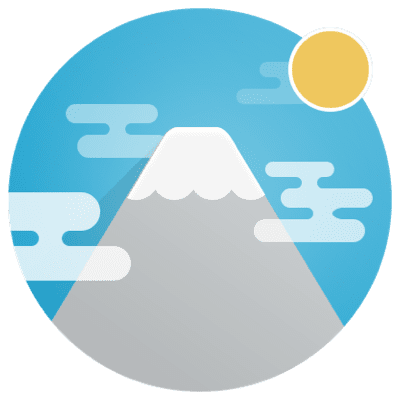+1 (719) 445-1191
support@kichijapan.com
Do not hesitate to give us a call. Our support team is here to answer your questions. Please call, or email us with any questions, comments or concerns that you may have. We are here to help!
1.719.445.1191
support@kichijapan.com






The first half of our month long tour takes you to all of the major cities and sites in Japan, but also exposes you to places few tourists and tour companies have even heard of. Our route includes Tokyo, Kyoto, Izumo, Nagasaki, Sasebo, and the rarely visited Goto Archipelago, all within the first 14 days. The itinerary also includes a homestay, an experience that allows you to go beyond just visiting the country, and gives you a more intimate understanding of Japanese life as you actually live with a local family. This part of the tour delivers Japan from all angles. From Tokyo’s futuristic neon lights, to the rice fields of Izumo. From Kyoto’s traditional setting and its ancient temples, to the pristine beaches of the Goto Islands. We have chosen the best locations so that you can make the absolute best of your time in Japan.
After a brief respite in Tokyo, the second part of the tour commences. Specifically designed for the nature lovers out there, you can look forward to remote destinations rarely seen by tourists, beautiful hikes with stunning scenery, and islands brimming with life. Leave the hustle and bustle of the city behind as you traverse the well-worn paths of buddhist monks or breathe in the history of temples which have endured for centuries. Drink in the afternoon sun with a boat ride down Takachiho Gorge or test your endurance as you hike Mt Misen off Hiroshima’s coast. If you’re someone who enjoys the outdoors but still wants to touch on some of Japan’s urban highlights, this tour and the rewards that it offers, are well worth it. Our April departure is a great opportunity to take in Japan’s cherry blossom season. We will also attend the infamous phallus-themed Kanamari festival which is definitely one of Japan’s more interesting celebrations!
3 April 2020
2 April 2021
Tokyo
Tokyo
Bullet train, local train, bus and ferry.
~3-5km
Expect to see and visit places many have never heard of before. You can also look forward to making new friends, both local and foreign, while traveling through some of Japan’s most beautiful destinations. While many tours advertise that they are taking you off of the beaten path, we actually deliver on that promise.
A moderate level of physical fitness is required for this tour as there will be multiple hikes as well as a bike ride in Goto on Day 10. We’ll also travel on both an overnight train, and an overnight ferry during the trip. Although we make a concerted effort to keep day-time travelling to a minimum, there will be one or two instances when more travelling is required to get to the more remote locations. We promise though that the end reward is well worth the effort.
Tour members will have the opportunity to participate in a filmmaking competition with footage they’ve taken during the tour. Prizes will be awarded at the end of the tour, more information with be given during orientation. Below you will find a list of things you should bring with you on the trip.

























Our first day starts with creating our own Japanese fruit liqueurs. We visit a Japanese sake taste testing superstore which boasts over 100 different types of sake from all across Japan. After choosing the ones we want, we head to the grocery store to grab the fruit you want to incorporate into your own unique blend. In Japan plums are a popular choice (to make umeshu), but feel free to get creative. We use a traditional Japanese method to prepare the wines, while going over the tour orientation and introductions. Once our wines have been completed, we bottle them up to let them marinate, enjoying them at the end of the tour. Our first day ends with a sunset visit to Sensouji.
On our second day, we gain a perspective of how large Tokyo is by looking at it from three famous views on three different levels. First, we descend 20+ meters below the surface to the “Underground Temple”. We then take to the skies with a panoramic view of Tokyo from Shinjuku’s Metropolitan government building, which places us 230 meters in the air. We’ll conclude with a ground-level view at the world-famous Shibuya intersection, which also offers visitors the opportunity to try out a number of fantastic restaurants for an evening meal!
This infamous festival is celebrated on the first Sunday of each April and has a very interesting centerpiece – the phallus. These erect objects can be found in everything from floats to food to decorations. The festival has its origins in a legend which details how an evil spirit hit inside a certain woman’s nether regions, and proceeded to bite off the appendages of her lovers. The young women sought help from a blacksmith who crafted an iron phallus which broke the evil spirit’s teeth – hence the carrying around of an iron phallus at the festival. One of Japan’s more odd attractions, this is definitely not one to miss!
After having delved into Tokyo’s past, we explore the more modern and futuristic areas of the largest city on earth. We start at the otaku culture mecca of Akihabara to satisfy one’s anime and manga fix. Not an anime fan? Never fear. There are a multitude of arcades, book stores, cafes, and other exciting spots for those with different interests.
Next, we’re off to Odaiba. You can’t experience the future of Tokyo, or even Japan, without having visited at least one of the many exhibits on the man-made island of Odaiba. Here we talk to androids, learn about the current global shifts in technology, and see all things future-tech. Once we’ve had our fill of the futuristic, we take in the sites of the city at night with a boat ride on Tokyo Bay. We also ride a roller coaster among the skyscrapers at Tokyo Dome City. For those not partial to roller coasters, there is a ferris wheel with a built-in karaoke booth and fantastic views.
We end our time in Tokyo by boarding the last existing overnight sleeper train in Japan to the town where the Shinto gods are said to congregate.
We wake up in Izumo city on Day 5 and meet with our Japanese host families for two days of experiencing authentic, small-town life in Japan. Even though Izumo is a small town, and vastly different from the fast-paced lifestyle of Tokyo, it is a very important and culturally significant location. Some of the last surviving katana makers call Izumo home. It is also home to Izumo Taisha, which boasts one of Japan’s most important shrines, beautiful beaches, and relaxing natural hot spring bathhouses.
This step of the trip is also important because it gives us a chance to actually spend time with a Japanese family. There are many things that are integral to Japanese culture that are easily missed without having the opportunity to build a relationship with a Japanese person. This experience gives you the chance to build new relationships with the people here, personally learn more about the culture, learn to cook real Japanese homestyle food, and gain a better understanding of the Japanese lifestyle and etiquette.
Please note that the itinerary for this portion of the trip is not pre-determined and depends on what your host family would like to show you during this time, informed by your interests. It is always a nice gesture when our guests prepare gifts for their host families, perhaps something special from your country, as a way of saying thank you for opening up their homes.
We say goodbye to our host families early in the morning and head to Kyoto for the next stage of our trip. We start our time in Kyoto in the Higashiyama district of the old capital with a meet and greet with a geisha in training (a Maiko, or as they are known in Kyoto, a Geiko). We’ll exchange pleasantries over matcha tea and get the opportunity to ask some questions later on in the afternoon. We then head to Yasaka Shrine to view one of the only shrines that remains open at night. Lastly, we make our way to the Pontocho area, which is packed with world-class restaurants for dinner, and walk along the Kamogawa River while enjoying the ambiance of Kyoto’s mellow evenings.
We start the day early as we make our way to Amanohashidate, a hidden gem in the Kyoto region and one of Japan’s top three sites. Literally meaning the bridge to heaven, this sandbar is an amazing site, and is a place where wishes are said to come true. While here, we also make a visit to Chionji Temple, Motoise Shrine and Amanohashidate View Land. A ropeway ride to the top of the hill reveals an even better view. This sandbar with its beautiful beaches as fantastic in summer, yet equally stunning in the colder months when a light covering of snow gives the area a winter wonderland feel. After that we head to Fushimi Inari shrine (the shrine with a thousand red gates), around sunset when the crowds have died down to enjoy it at a more relaxed pace.
From old capital to ancient capital, we spend the first part of our day in Nara at Todaiji temple where monks share their space with the deer in that area. You’ll get a chance to feed the deer, explore the temple grounds, and also witness the largest bronze Buddha statue in the world, inside of the temple’s Great Buddha Hall.
We’ll then head to a nearby mountain which is home to hundreds of cherry blossom trees. Enjoy taking in the sight of these pink and white flowers as we embark on a short hike to its peak!
The morning starts with a trip to Kameoka via an *open-air steam train that weaves its way in and out of the Hozugawa river, while taking in the spectacular colourful mountain landscape. We then enjoy a traditional boat ride down the river, to make our way to the Arashiyama district where we visit Nonomiya Shrine, Tenryuji (and the famous bamboo grove behind it), and enjoy a beautiful view of Kyoto from the Arashiyama monkey park where macaques roam freely around the mountain.
After that we leave the old capital behind and head to our first island destination on the tour. We stop in the city of Fukuoka to hop into a natural hot springs onsen before catching an overnight ferry to the Goto Archipelago.
*unavailable in winter
We wake up in the middle of an island-speckled sea before docking on Fukue Island. You’re in for a treat if you’re able to wake up early enough to catch the sunrise from the front deck of the boat. The Goto Islands are steeped in mystery. The history and stories that the islands have to tell are very deep and interesting. Kichi Japan are the only tours that take you there. There are many places to explore and discover in the archipelago. For example, Kuroshima, which is an abandoned island on which a 96-year-old woman and her daughter have decided to resettle together. Or the multitude of islands that early Christian worshipers fled to in order to worship without being persecuted.
Our journey there starts on the main island of Fukuejima – a place that was settled by fleeing Christians. We learn about their story and also enjoy a bike ride around the island to visit Dozaki church where you will see a number of relics which held much significance to hidden Christians. We’ll also stop by one of the island’s pristine beaches to take in the scenery and perhaps take a dip if it’s warm! We then finish the night off at a one-of-a-kind ramen karaoke bar that serves quality food and drinks from the comfort of your own private karaoke booth.
On day 2 of our adventure in Goto, we make our way to Oushima (literally, Yellow Island). The history of this island is also fascinating. Once an island that was heavily populated during the whaling boom in this region, the population of the island has shot down from 1500 to a mere 40+ people who now call the island home. The cat population of the island is actually higher than the human. Abandoned schools, homes, and boats are a common sight here, but this small fisherman’s island still has life in it. We explore the island, and make our way to a cave on the opposite end to discover a secret hidden within. Oushima differs from the surrounding islands in that it is mainly flat and is much easier to navigate.
After the island and cave exploration is over, we then make our way back to Fukue Island where you will have some free time to explore the main island. Our last night in Goto is spent having dinner at the island’s best homemade style restaurant, where everything is freshly prepared on a daily basis and the menu is dependent upon the daily catch.
Please note than during our January tour, this day will be replaced by the Hetomato where visitors will get the rare opportunity to experience a traditional Japanese festival!
Day 13 begins with a trip to Sasebo to spend the day at the theme park Huis Ten Bosch. Designed to look like a Dutch village, Huis Ten Bosch has a plethora of attractions, and is twice the size of Disneyland. No matter your interests, there is something here for you. From zip lines to endless chocolate fountains, this place will mesmerize you. At night, we make our way to Nagasaki to catch one of the best night views on earth from the top of Mount Inasayama. The 5 minute ropeway will show us the amazing lights of Nagasaki as well as the harbor.
Our final day of the tour consists of a few visits to some of the historical sites around Nagasaki, where we learn a bit about the history of the city. We start at the reclaimed island of Dejima to learn about the influence that the Dutch had on Japan, and the relationship that was formed between the two nations. After that we make our way to the Peace Park to hear about the unfortunate events that took place in the city during the Second World War.
We then head back to Tokyo (arriving around 9 PM), enjoying the drinks that we made on Day 1, and say our goodbyes to those leaving us. For those staying on for the full 1-month tour, we have a short break before embarking on another 2-week journey around the lesser known, yet astoundingly beautiful areas that Japan has to offer.
Note: Your JR pass, which covers all travel on JR train and bus routes, will be valid for the next two days should you want to engage in some solo exploration. Your guide can provide you with recommendations and assistance with creating a personal itinerary.
Our second part of the tour starts with an introduction to the world’s biggest city. Expect to hit the ground running, literally, with a trip to Chiba as we prepare to take on Japan’s largest obstacle course. We then hop on a train to visit one of Yokohama’s more eccentric oddities, the Cup Noodle Museum, where we create our own custom cup ramen with all of the trimmings you desire. We also have time to peruse the noodle bazaar which boasts noodle dishes from all over the world. And for those who are feeling especially brave, why not try the ramen-flavored ice-cream?
Today we make our way to the UNESCO world heritage site of Toshogu shrine. This is, in our opinion, the most ornate and beautiful shrine in all of Japan. This historically significant structure also serves as mausoleums that deifies the man who unified Japan, making it an extremely sacred place for the Shinto religion. Toshogu is also set against a stunning backdrop of forested mountains which is an attraction in and of itself.
We then slip back into time and experience life as it was in 17th century Japan with a visit to Edo Wonderland. This cultural theme-park/open-air museum is a must-stop place for some light-hearted enjoyment! Bring out the fun in you as you opt to dress up in traditional Edo attire and choose from a variety of activities like hariko-doll painting, makeup artistry, samurai sword fighting and archery to name but a few. We also highly recommend the fantastic ninja and magic shows, mazes and ninja trickhouse.
We start our day with a wagashi workshop. Witness and emulate your teacher’s meticulous attention to detail as you create your own very own sweets. We give you fair warning though, you may find them too pretty to eat!
We then hop on a train to a sake brewery just outside of the city where we will enjoy a guided tour of the brewery grounds. Sake is not simply a beverage in Japan, but carries with it a vast amount of meaning and spiritual significance. Here we will learn all about the intricate process behind the creation of this rice wine, as well as tantalize our taste buds with samples from the brewery’s store.
On our return to Tokyo, you can look forward to a free evening to explore the vastness of the city.
One of Tokyo’s most unique and special attributes is its ability to combine technology with innovation to give the most amazing experience. One such experience is an interactive and sensory art exhibition which requires its visitors to expend a bit of energy – with activities like wading through moving art displays projected onto water, crawling through rooms lined with massive cushions, and using apps to control LED light-art displays. It really gives new meaning to the term ‘modern art’ and is an experience you’re not likely to forget soon!
We’ll then spend some time in the Tokyo Bay area. All of Japan’s major corporations have their concept technology housed around here and it’s an area brimming with innovation and futuristic experiences. One of these is the Toyota City Showcase. Car enthusiasts won’t want to miss this. Check out the latest innovations in the technology zone, reminisce about the old days as you wander through the vintage car collection rooms at the history garage, or test-drive your favorite car on their private track (an international driving license is necessary). For those not partial to automobiles, this is the perfect opportunity to get in some shopping or check out the nearby museums before we bid farewell to Tokyo.
In the evening we swap city for island and board the overnight ferry to our first island destination.
Did you know that Tokyo has islands? It does, and we start our day by visiting one of the islands that also happens to be the smallest village in Japan*. With a population of just over 100 people, the entire island is also a small, lush dormant volcano out in the Pacific Ocean. Getting there is accomplished by ferry, and once there it offers some of the best stargazing in Japan. Allow the ocean waves to soothe you, as you let time slow down and experience the island lifestyle, culture and a unique shochu that can only be tasted there.
Our island experience continues the next day as we move onto Hachijojima. For those wanting to travel in style, why not go by helicopter?** The views on this short trip from Aogashima to Hachijojima are fantastic. Upon arrival, we get to enjoy the hot springs of Miharashi onsen while taking in its pristine ocean views. The onsen is also equipped with a routenburo. Our day ends with a BBQ on Sokodo beach which is famous for its beautiful black sands. During the summer months, Hachijojima is home to bioluminescent mushrooms, which we may catch a glimpse of.
*Access to Aogashima may be hindered by inclement weather conditions. Should this be the case we will remain on Hachijojima. Therefore the itinerary items that relate to Aogashima are not guaranteed and are largely dependent upon the weather conditions at the time that we arrive to Hachijojima. More information will be provided during orientation.
**An extra fee will be incurred for those wanting to travel to Hachijojima by helicopter. Please inquire for further information. As spaces on the helicopter are limited and sell out fast, this is not guaranteed even if requested.
***In adverse weather conditions the overnight ferry from Tokyo to the islands might be cancelled. In this case accommodation will be provided for in Tokyo and alternative activity arrangements will be made to replace this island-portion of the trip.
A large part of the day will be spent traveling as we exchange island vibes for city life on our journey south to Osaka. Upon arrival in Kansai’s largest city we’ll check in to our accommodation, freshen up and then head for a night out.
Say hello to one of Japan’s most vibrant cities as we visit one of country’s most famous landmarks, Osaka Castle. The castle grounds span 15 acres and provides a panoramic view of the city of Osaka. We will begin by getting a good outside view of the castle from a boat trip around the moat that encircles the castle. From there we’ll journey inward to learn about the pivotal role that Osaka castle played in unifying the nation of Japan.
The rest of the day will be catered to your interest as you explore the city of Osaka with the assistance of your guide. At night we’ll meet up again to discover what the nightlife of Osaka has to offer by starting off with a river cruise through the Tombori area. Next we’ll hit the streets of the city’s nightclub district, before calling it a night.
Today Kansai is your oyster! After a few days of intense travel, this will be the perfect opportunity to relax and enjoy exploring some of your own interests for a brief period of time. Not only is Osaka packed with tons of amazing activities and places, but it is in a prime position for easy day-trips to multiple nearby areas. Here are a few of our suggestions:
Breakfast and shopping in Nishiki Market. This expansive area of shops and food stalls in nearby Kyoto is a great place to stock up on souvenirs and drown yourself a seemingly never-ending selection of delicious foods and aromas.
Day trip to Kobe: This picturesque port city has various attractions including: the world’s longest suspension bridge, an earthquake museum, several sake breweries and dozens of restaurants where you can enjoy its famous A5 quality wagyu beef.
Walk the gardens of the Kyoto Imperial Palace: Before Tokyo took its place, Kyoto used to be where the imperial family resided. Although you cannot enter the buildings, the outside grounds give you a good idea of how large the palace is. There are also tours which take place on most days.
Head to Himeji: A city famous for its castle which is said to be the most spectacular in all of Japan. Its gardens are also brilliantly pink and white with cherry blossoms in spring.
Visit the Wazuka tea plantation: A small town which produces almost half of the country’s matcha tea and offers visitors the opportunity to pick leaves and experience a tea ceremony amongst other things.
Enjoy a whiskey tasting at the Suntory Yamazaki Distillery (this requires advance booking) or get your fill of sake as you spend time in a tasting cellar in Osaka.
The next 2 days will be an immersive experience into Japan’s Buddhist culture, as we actually stay in a buddhist temple lodging. Here we will eat their vegetarian cuisine (shojin ryouri), attend their meditation classes, and simply take some time to slow down and relax. We’ll witness the morning offering at Okunoin Cemetary before wandering through the Torodo Hall of Lamps, and spend some time in nature as we sample the variety of stunning hiking trails during our stay – some of which include waterfalls and ancient temples that are still being used to this day.
Hiroshima is such a special place in Japan for so many reasons. Not only does it offer an important and sobering learning opportunity for each and every generation, but it is also a place of magnificent inspiration as visitors are able to witness just how marvelously the city has built itself back up again after the events of WW2. While visiting Hiroshima today we will learn all about this at the Atomic Dome Museum and Hiroshima Peace Park. The park gardens are also an attraction in and of themselves with several sculptures and works of art scattered about the grounds.
Hiroshima has other attractions besides those related to the war. Hiroshima Castle used to be an important seat of power in this part of Japan. Like much of the city, it was destroyed during war, however visitors can see a rebuilt version based on the architecture of the original design. Group members will have the option of paying a visit to this castle which is an interesting comparison to those of Osaka and Himeji.
In the evening we’ll head out for a meal of okonomiyaki. Something like a cross between and omelette and savory pancake, this is Hiroshima’s most popular dish and is a must-try while in the area!
Today we’ll visit the island of Miyajima. This picturesque location is a rarity in Japan in that it has never experienced a major earthquake or fire like so much of the mainland. This means that many of its temples and shrines are in their original form and centuries old!
We’ll travel there via a short ferry ride. Be sure to stand on the deck to get a good view of the giant red torii gate rising out of the sea. During our time on the island we will visit Daisho Temple, Itsukushima Shrine, and Mt. Misen via a scenic hike. The view from the top of the mountain, across the inland sea dotted with islands, is superb! The island is also populated with dozens of friendly deer, which is just another aspect that makes it so memorable.
From the ancient magical island of Yakushima to the mythical town of Takachiho, we head out to the place that is the setting for multiple Shinto legends and holds much spiritual significance in the Shinto belief system. It is home to the spot where the goddess Amaterasu is said to have hid inside a cave, and caused the world to fall into darkness. Takachiho is also said to be the place where Niniginomikoto, grandson of Amaterasu and great-grandfather of Japan’s first emperor, descended to govern the world.
There is much to be discovered, learned and experienced at this mystical spot and we start our time here with a show at Takachiho’s Kagura hall, where our performers play the role of the gods themselves to tell us their story.
*Due to tsunami damages, the train to Takachiho has been indefinitely suspended. Reaching this remote location will have to be made by bus, which will take time.
We get around the town by bike on this day. We start the day at the Amanoiwato Shrine, where Amaterasu is said to have hid herself, and her light from the world. When Amaterasu sent her grandson to Earth to govern it, one of his missions was to plant rice, so we’ll make our way through the beautifully picturesque Tochimata terraced rice fields before moving on to the Amaterasu Railway station where we’ll board an open-air, roofless train* to get a breathtaking view of the surrounding area. After this, we’ll revisit the Takachiho Shrine where we saw the kagura show the night before. The daytime light will provide us with a chance to see the shrine in all its glory as well as the monolithic wedded cedars in the front of the shrine.
From there we’ll make our way down to the famous Takachiho Gorge and, if you are interested, you can rent row boats to explore an area of the river. Before saying goodbye to the town of legends, we take a short hike from the Mihashi bridge to the visit both Kihachi’s strength rock and the Sandan-bashi areas of the gorge.
We spend our last night in Kumamoto city, eating and drinking to celebrate our time together and the memories we’ve created.
*dependent on weather conditions
We finish up the tour with a visit to Hatsushima which boasts pristine views of Mt Fuji. This island is the fourth and last island on our trip back to Tokyo and is seated in the sea outside of Atami. Positioned in the shadow of the iconic Mount Fuji, Hatsushima houses many different activities including a canopy walk and zip line facility which you will have the option to enjoy. We’ll spend our day here before saying our goodbyes back in Tokyo.
All of our tour prices are per person, so solo travelers will not need to pay a supplement. If you would like a private room instead of hostel accommodation for the Tokyo portions of the trip, we can arrange this at an extra cost.
In order to maximize experience as much as possible, we use shared hostel accommodations in most of our locations. Sleeping arrangements will be in dormitory-style rooms usually separated by gender if possible. We will also travel on both an overnight ferry and sleeper train during this tour.
We arrange accommodation from the night of the 1st day, to the night before the last day. Should you require accommodation before or after the tour, we can assist in arranging this for an additional fee. You can also book this on your side.
The 25% deposit is non-refundable. The cancellation fee depends on how long before the tour the trip is cancelled, and is calculated according to the following:
Cancelling between 46 and 60 days before departure: 60% of the holiday cost
Between 31 and 45 days before departure: 80% of the holiday cost
30 days before departure: 100% of the holiday cost.
We do offer customization services and can plan additional locations and activities both before and after your tour, which can be tailored to your preferences. Contact us for further information on our customization rates.
